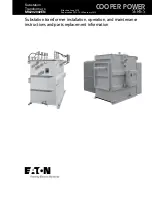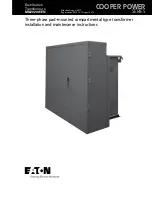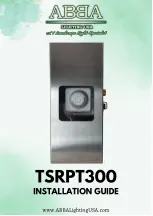
52
4.
Verify that the selected measuring ranges correspond to the desired values; if not, modify ranges as
needed;
5.
If the alarm levels are required at values that are not the 10 % and 90 % of measuring range, enter the
Alarms menu and set Low Alarm and High Alarm level as required. Refer to Sect. 4.4.3;
6.
Verify that all Configuration parameters are set as required (See Sect. 4);
7.
Once the sensor(s) sensitivity is stabilised the calibration procedure(s) has to be performed to
standardise the transmitter together with the connected sensor(s);
8.
During the first 4 days of operation, it is suggested to verify every day the reading of the Monitor, and
repeat calibration if necessary;
9.
Now the Monitor is in operation. It is important repeat periodically the maintenance procedures detailed
in the I.B. pertinent to each sensor.
7.1.2
Personalization of Parameters
1.
If the Input / Output digital contacts are used, enter the Configuration menu and set the NO or NC
status of the contact as desired;
2.
It is important to remember that any device connected to the digital output must be arranged in order to
operate in fail safe condition;
3.
If the Serial Communication option has been selected, enter the Configuration menu and set the
desired instrument address, baud rate and selected communication port ;
4.
Select the desired engineering unit for the temperature indication;
5.
If it is desired to operate the controller with the average value of 2 or 3 identical sensors, select PID in
the Channel installation menu;
6.
If it is desired that the transmitter calculates the difference between two identical sensors input values,
set a value in the “Delta” parameter;
7.
If required, select a dumping value for each channel input;
8.
Modify the “Password” in the Configuration menu, if it is desired to set a personalised access code.
7.2 Controller PID tuning
The PB, TR, and TD constants are preset to the default values shown in Table 7. If desired the control action
setting can be optimized by using a trial and error method as outlined below.
1.
Set process to approximately normal conditions in MANUAL;
2.
Preset constants to some acceptable starting point for the process. For example
PB = 500
TR = 100
TD = 0
3.
Switch Controller to AUTO mode;
4.
Decrease the PB setting to ½ the previous value. Then, alter the set point 2% by pressing one of the
set point pushbuttons;
5.
Check that the process indication value does not oscillate;
6.
Continue to decrease the PB setting by a factor of 2, altering the set point between steps until a point is
reached where process cycling is just evident. Then increase the PB setting by a factor of 2;
7.
Introduce Automatic Reset slowly by decreasing TR until cycling starts;
8.
Increase TR to approximately 1,5 times the value obtained in 7) above;
When PID tuning constants have been selected, the controller is ready for on-stream operation. Optional PID
tuning methods may be desired for slow response processes .
Summary of Contents for AW400 Series
Page 1: ...Instruction Manual IM AW4TX Issue 5 Chlorine Transmitter AW400 Series ...
Page 69: ...67 Notes ...
Page 70: ...68 ...
















































